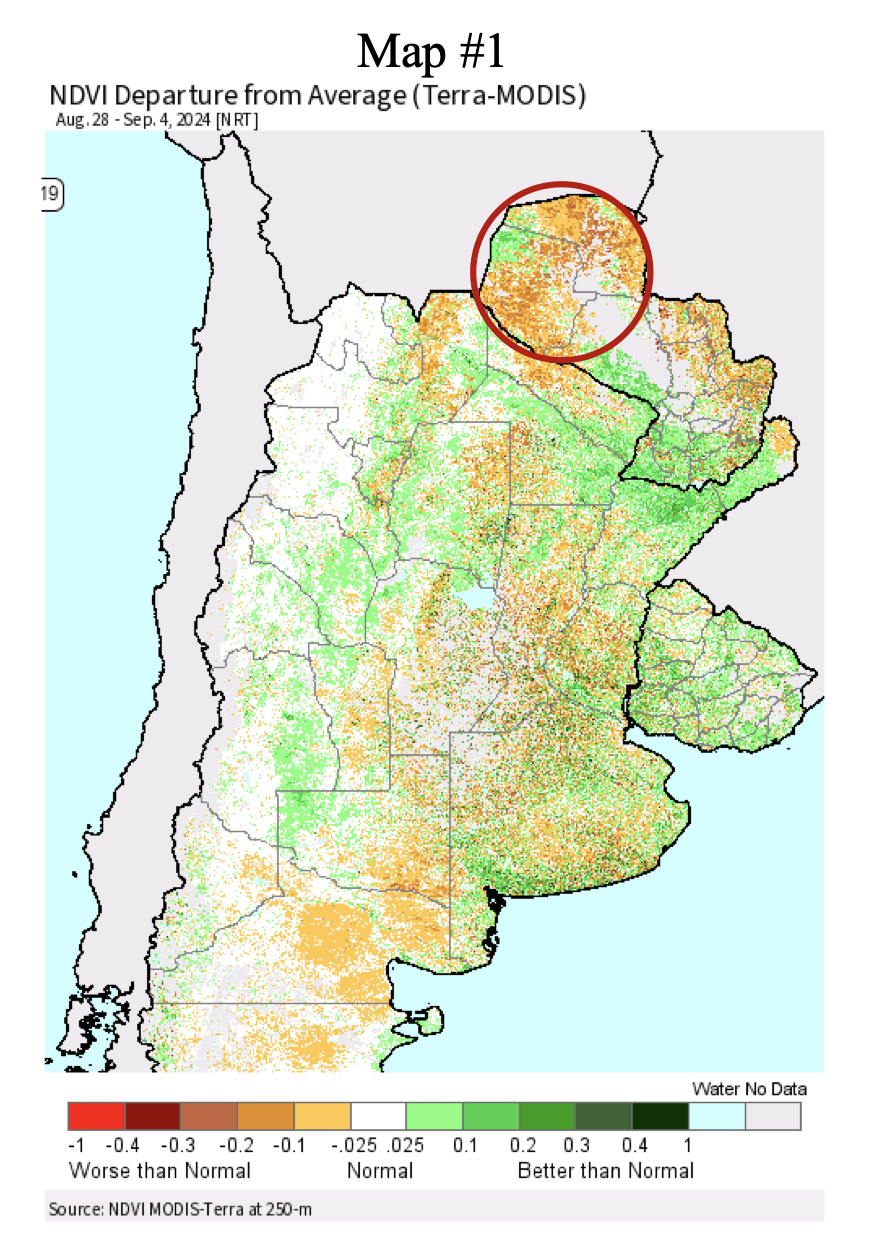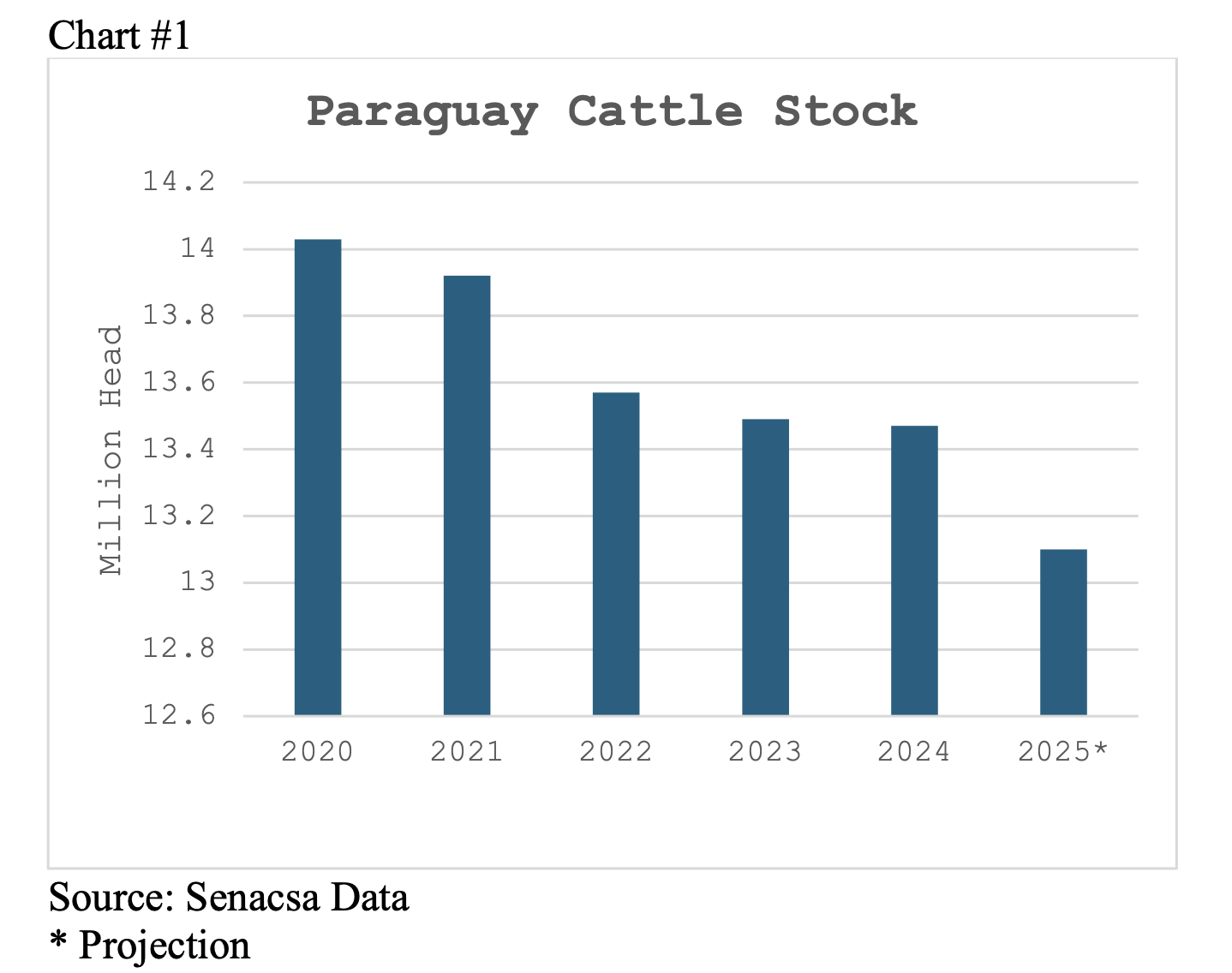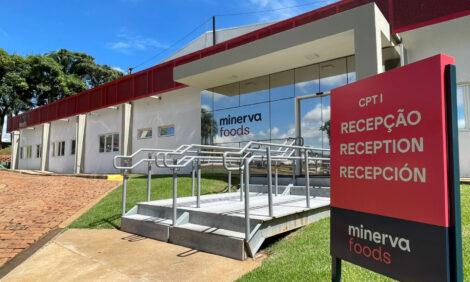



Beef production in Paraguay forecast to decline in 2025
Paraguay suffering from three years of continuous droughtBeef production in Paraguay in 2025 is forecast to drop at 560,000 tons carcass weight equivalent (cwe) as result of a decline in slaughter assuming a more normal weather pattern in 2025 following three straight years of drought, according to a recent US Department of Agriculture (USDA) Global Agricultural Information Network (GAIN) report.
A very dry 2024 forced many producers to sell more cattle than planned to have a lighter stocking rate as the production of pastures was very limited. If rains return to normal patterns the slaughter will total 2.3 million head, almost 150,000 head less than that estimated for 2024. The average carcass weight in 2025 is forecast up at 244 kilos, 3 kilos heavier than in 2024, because a smaller number of cows in slaughter and a larger number of cattle finished on grains.
The local cattle business is going through a difficult situation due to a combination of 3-4 years of dry and hot weather, low cattle prices and increasing costs. Producers claim that cattle prices barely cover production costs and that dry conditions have affected producers’ efficiency.
The below map shows the normalized difference vegetation index (NDVI) and its departure from average through early September 2024. Most of the western part of Paraguay (Chaco Region) continues to be severely affected by drought. Circled in red are Alto Paraguay and Boqueron, the two Departments mostly affected where most of the late investment in new ranches took place. A larger number of cattle than normal were moved out from these two departamentos directly to slaughter or to other areas with better pasture conditions.

The cattle stock in 2025 is estimated to decline at 13.1 million head because of the higher slaughter in 2024, especially female cattle, small calf crops in the past several years because of dry conditions and an expected lower-than-normal calf crop (calves born) in 2025 because of far from optimal condition of the cows as they enter the breeding season in a few months’ time.
The local cattle herd duplicated during 2003-2014, but since then it started to decline almost constantly to date with a loss of about 1 million head. Cattlemen indicate that if poor weather conditions and low prices persist, we will surely experience further decline in herd size over the next few years.
The chart below shows the size of the cattle herd in the past five years and its projection for 2025:




